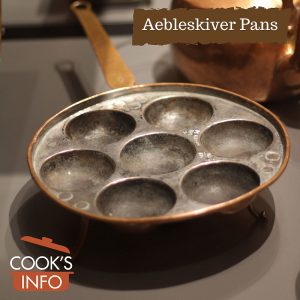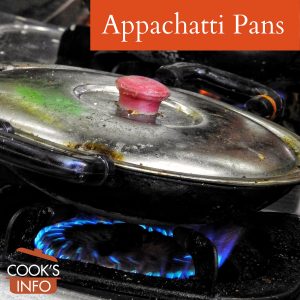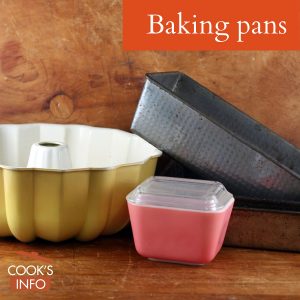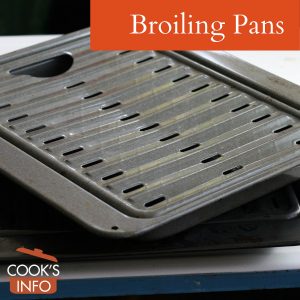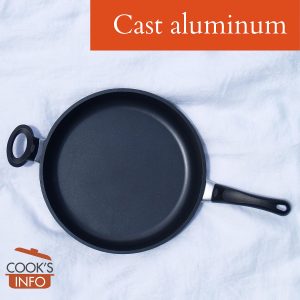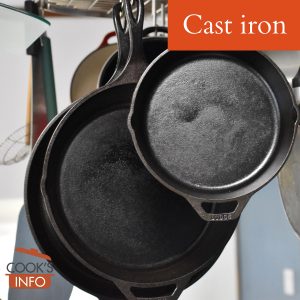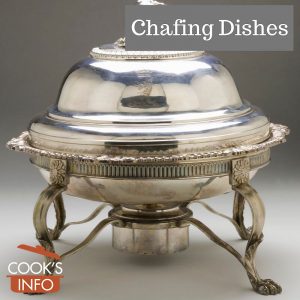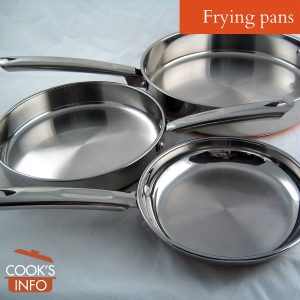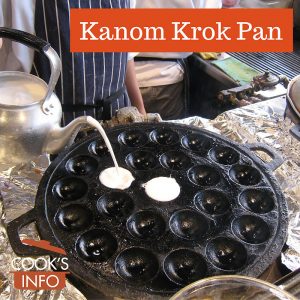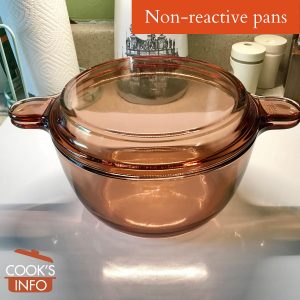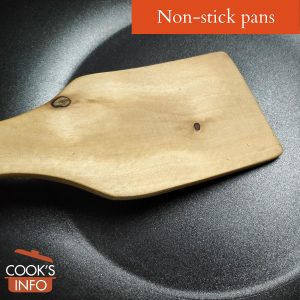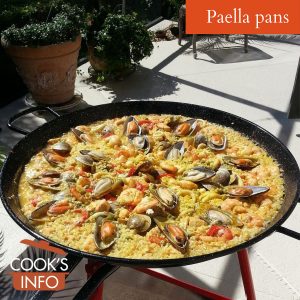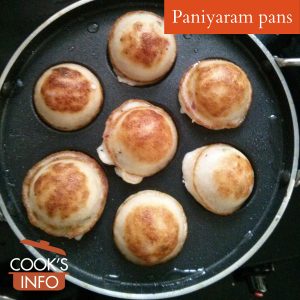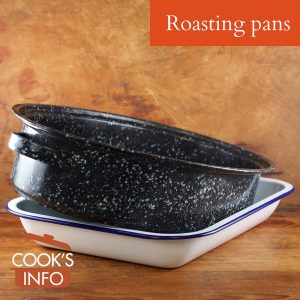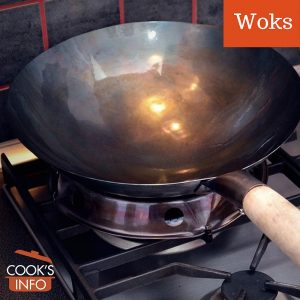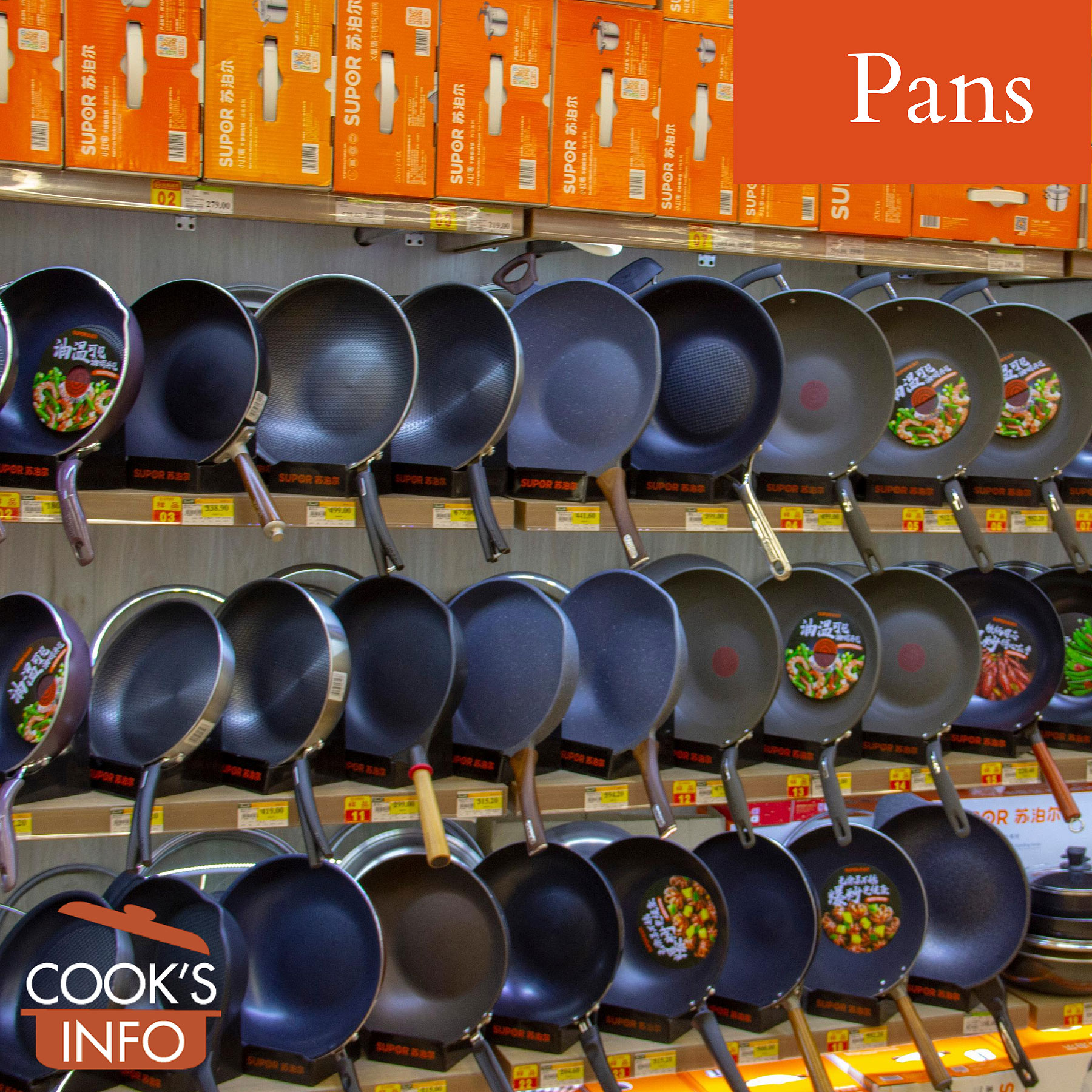
Store display of pans. 維基小霸王 / wikimedia / 2020 / CC BY-SA 4.0
Pans are shallow, heat-proof vessels used for cooking. Their role is to contain food over heat, and deliver heat from the outside heat source — burner or oven — to the food inside. They are typically used with solid, as opposed to liquid, ingredients.
Distinguishing pans from pots
A problem arises when trying to distinguish a pan from a similar cooking vessel, which is called a “pot”.
In general, pots are for liquids; pans are for solid ingredients.
Consequently, pots are deeper, with straight up sides.. Pans are shallower, and may have sloped-out or curved sides.
Some say a pot should have two handles, and a pan only one, a longer one. In practice, most pots have one long handle.
Pots often get called pans, but pans are almost never called pots. A saucepan is technically a sauce pot, but most English speakers would never refer to a frying pot.
A chip pan is actually a chip pot.
A wok is a pan.
Of course, all attempts at disambiguation go out the window with Dutch ovens and large soup kettles.


